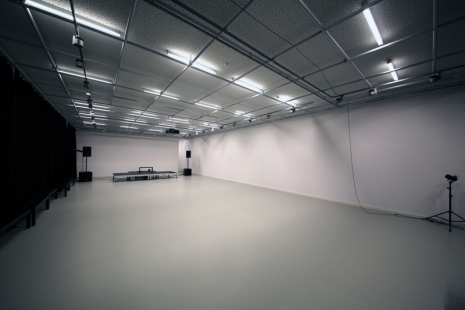NAC annual exhibition OBSESSION
Artist: Case (Ieva Lygnugarytė & Xavier Mitchell), Annika Eriksson, Felix Kalmenson, Tomasz Kobialka, Zoe Leonard, Fox Maxy, Marija Olšauskaitė, Mykolas Valantinas, Nijolė Vilutytė, Miglė Vyčinaitė
Curator: Anastasia Sosunova
Amidst the high season, on 21 July, NAC opens its annual exhibition.
Obsession is a group exhibition, curated by the artist Anastasia Sosunova in two locations: Nida Art Colony of Vilnius Academy of Arts and KRATC, a waste collection site 11 km from Nida, between Preila and Pervalka. The exhibition opening on Friday 21 July is followed by the Nightlife Residency sound and performance events, as well as guided tours, presentations and talks on Saturday 22 July.
The exhibition and public events are free of charge.
The exhibition will come in a form I cannot yet imagine.
When thinking of how artists can interact with the environment in Neringa, the term ‘obsession’ comes to mind. It entered my vocabulary almost as a synonym for the cathartic religious glossary of passion, temptation and ecstasy. Obsession might mean a total involvement, a necessity or a fling. Or perhaps, a seemingly ‘irrational’ force which drives artists to find answers, express their desires, ask questions, and make gestures that disrupt structures of power, as poetic gestures of what philosopher Ewa Majewska terms ‘weak resistance’.
I heard of artists who were haunting their artworks in institutions, punishing them for poor upkeep. I heard of artists who carved 4000 walking canes, and of artists obsessed with those artists. I heard of artists who can’t stop filming, the camera lens becoming a protection of their point of view. I heard of artists who grew suspicious of every stone they found in a city built from gravestones.
I heard of artists who process life through images and materials, work bullshit jobs and can’t not make art. I wanted to write to them and say ‘I think I get it’. It takes one to know one.
Life on the Curonian spit revolves around the high season: birds, insects, plants, people, and the seasonal flow of capital. ‘Migration can be triggered by the angle of sunlight, indicating a change in season, temperature, plant life, and food supply,’ writes the poet Ocean Vuong when comparing human migration to the migration of monarch butterflies – ‘it only takes a single night of frost to kill off a generation’. Which is to say, a bad summer season on the Curonian Spit may ruin a life. You see, we find ourselves in a resort town on a human-shaped landscape with a complex legacy of colonial history spanning over the last two centuries, forming the landscape and its narrative with its twists, contradictions, and unexpected turns. While today, the picturesque view provides a backdrop for the neoliberal branding of the landscape, a staged authenticity formed by real estate operations, and a particular kind of resort-town urban development imagination. The roles are distributed: a guest, a ghost, a host, a superhost.
– Anastasia Sosunova
The exhibition is curated by the artist Anastasia Sosunova who invited ten international and Lithuania-based artists to develop new, or place existing works in the particular setting of KRATC, a waste collection and recycling site in Neringa, and the exhibition space of Nida Art Colony of Vilnius Academy of Arts.
The collaboration between NAC and Anastasia Sosunova reflects the hybrid character of NAC, linking long-term collaborations with artists who explore their practice in different types of collaborative formats that include teaching, commissioned works, publishing and exhibition making. In 2021 and 2022 Sosunova was working on the site specific sculpture and publication My Own Private Ghost Town and in winter 2023 she conducted a 5-day long intensive study course Rites of a Secular Age for students from Vilnius Academy of Arts and the KUNO network of Art Academies in the Nordic and Baltic region.
Website: nidacolony.lt
Exhibition graphic design: Andreas V. Nielsen
Partners: KRATC, Neringa Museums
Funded by: Neringa municipality, Goethe-Institut, Nordic-Baltic Mobility Programme for Culture





